“It Feels Like a Juvenile Hall to Me” - A Snapshot of Conditions in the Warren E. Thornton Youth Center

“It Feels Like a Juvenile Hall to Me” - A Snapshot of Conditions in the Warren E. Thornton Youth Center
Disability Rights California (DRC) recently learned through media reports that Sacramento County is housing foster youth at the Warren E. Thornton Youth Center (“WET Center”), an unlicensed juvenile facility formerly operated by Sacramento County Probation. In response, DRC’s Investigations Unit opened an investigation into the facility and conducted an unannounced site inspection on April 17, 2023.
“It Feels Like a Juvenile Hall to Me” A Snapshot of Conditions in the Warren E. Thornton Youth Center
Introduction
Disability Rights California (DRC) recently learned through media reports that Sacramento County is housing foster youth at the Warren E. Thornton Youth Center (“WET Center”), an unlicensed, former juvenile detention facility. In response, DRC’s Investigations Unit opened an investigation into the facility and conducted an unannounced site inspection on April 17, 2023.
Updates: On May 16, 2023, the California Department of Social Services denied Sacramento County’s application to license the Warren E. Thornton Youth Center and ordered the County to transition all youth out by June 16, 2023, or face fines of $200 per day per foster youth.
DRC has also updated the report to refer to the Warren E. Thornton Youth Center as a former juvenile detention facility.
Media reports and public records described the facility as having a carceral environment and conditions unsafe for foster youth. According to the Sacramento Bee, foster youth sleep in cells with metal beds and toilets covered with wooden boxes.1 In its letter to the County dated Sept. 26, 2022, the California Office of the Foster Care Ombudsman described the facility as a “jail-like setting” that was “inconsistent with it being a safe, healthy and comfortable home.”
Sacramento County officials have thus far limited outside access to the WET Center. But as the state’s Protection and Advocacy agency, DRC has authority under federal and state law to inspect the facility2 and report our findings to the public.3 We are issuing this report to provide a snapshot of the facility’s current conditions and educate the public on this urgent and developing situation.
The foster youth at the WET Center are among the most vulnerable in the County. They come to the facility from disrupted placements and remain there because of the shortage of therapeutic placements and services in the Sacramento area. Many likely have disabilities; disabled youth are overrepresented in California’s foster care system4 and have significantly more placement disruptions and longer stays in the system than foster youth without disabilities.5
Because youth enter the WET Center from traumatic placement disruptions, it is imperative that they receive trauma-informed care and supervision in a nurturing, homelike environment. Yet the WET Center’s conditions and environment unquestionably remain that of a former juvenile detention facility. As one teenaged foster youth remarked to DRC inspectors, “It feels like a juvenile hall to me.” County officials told DRC inspectors that behavioral services are only available on site one day per week – an insufficient amount considering their complex needs and trauma histories. It is not clear whether these services are culturally competent, trauma-informed, and person-centered.
Sacramento County’s History of Unlicensed Foster Youth Placements
The current crisis dates to 2016 when the County leased space for its Centralized Placement Support Unit (CPSU) on the campus of the Children’s Receiving Home of Sacramento. In February 2016 the California Department of Social Services (DSS) cited the County for operating the intake unit as an unlicensed shelter. The state found that the children and youth brought to the CPSU stayed for extended periods of time, slept on the floor, and went unsupervised. It ordered Sacramento County to close the facility by September 30, 2017.6
Sacramento County did not close the intake unit until 2020. It then moved the children and youth to a County-owned office building. The building had no beds, no showers, and virtually no kitchen facilities. In May 2022, DSS determined it “posed an immediate health and safety risk” and could not continue to house children and youth.7
The County stopped using the office building in August 2022 and moved the children and youth to the WET Center, a closed juvenile detention facility down the street. In February 2023, DSS notified the County that it was operating the WET Center without a license.8 The County then applied for a license to operate the facility as a temporary shelter care facility.
drc Site Inspection
DRC learned through our inspection that in addition to applying for a license Sacramento County has made upgrades to the site, including the installation of electrical outlets in the cells. These actions suggest that the County may intend the WET Center to be a long-term solution.
DRC agrees with the Foster Youth Ombudsman and others that the abrupt closure of the facility is not in the youths’ best interest. But the WET Center must only remain open in the short-term. DRC calls on Sacramento County to immediately begin transition planning for each foster youth resident and phase out its use of the facility.
DRC does not support the creation of more congregate care settings as a response to this crisis. The County must increase investments in specialty mental health services like intensive wrap-around and family finding and engagement so that foster youth can avoid placement disruptions and remain in their home- and community-based placements.
Facility Entrance and Security Presence
The Warren E. Thornton Youth Center is located at 4000 Branch Center Road, Sacramento, CA 95827. Sacramento County Probation operated the juvenile detention facility until its closure in 2009.9 The Sacramento County Probation Department still maintains administration offices on site. The Sacramento County Department of Child, Family, and Adult Services has housed foster youth at the unlicensed facility since August 2022.
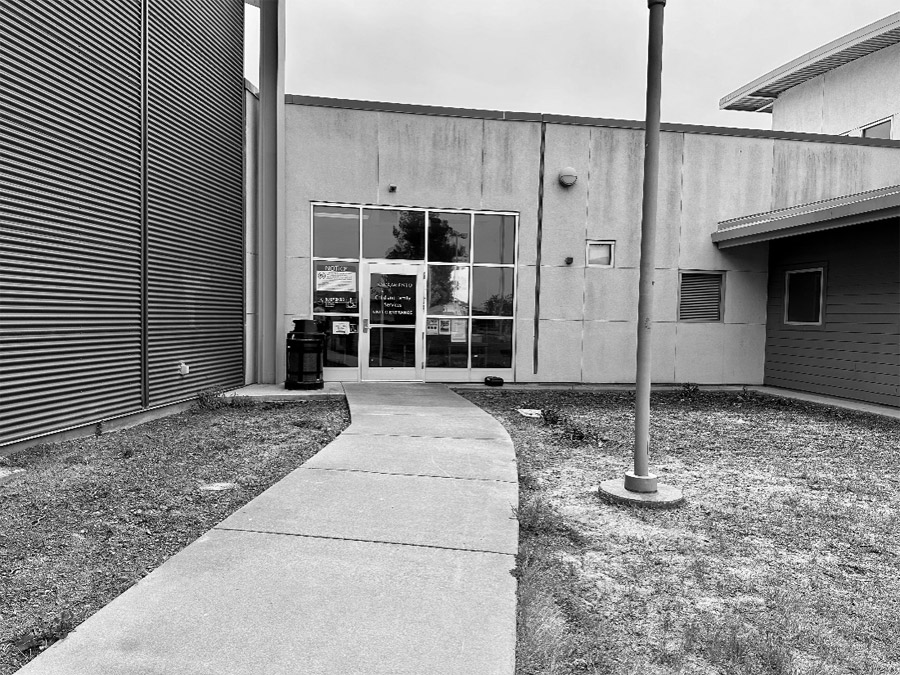
The entrance to the WET Center is around the back of the building. Beyond the front door is a metal detector and x-ray security scanner. Three security officers from the Sacramento County Sheriff’s Department staffed the entrance and screening devices during DRC’s inspection. DRC learned that the facility recently removed the vegetation on the sides of this entrance walkway to improve the security officers’ line of sight from the lobby.
WET Center Cells
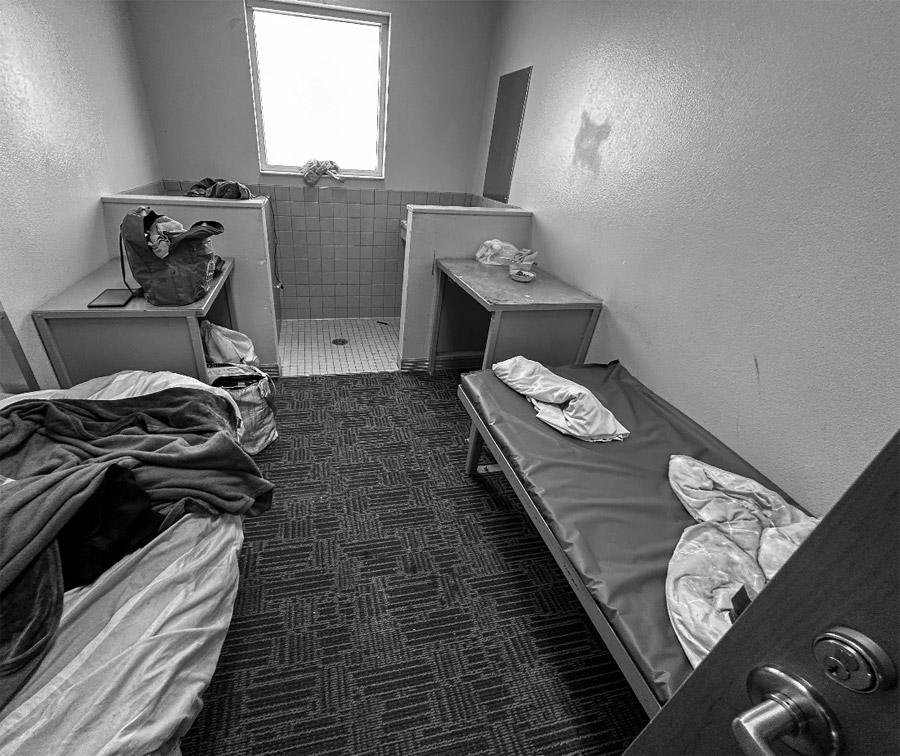
This photograph shows an occupied double occupancy cell. Each bed in the facility had a metal slab bed frame topped with a thin, plastic bedding pad. The pad is visible on the bed to the right. Beyond the beds but still on the carpeted area are metal desks. The tiled area in the back contains the cell’s sink and a wooden box covering the toilet.
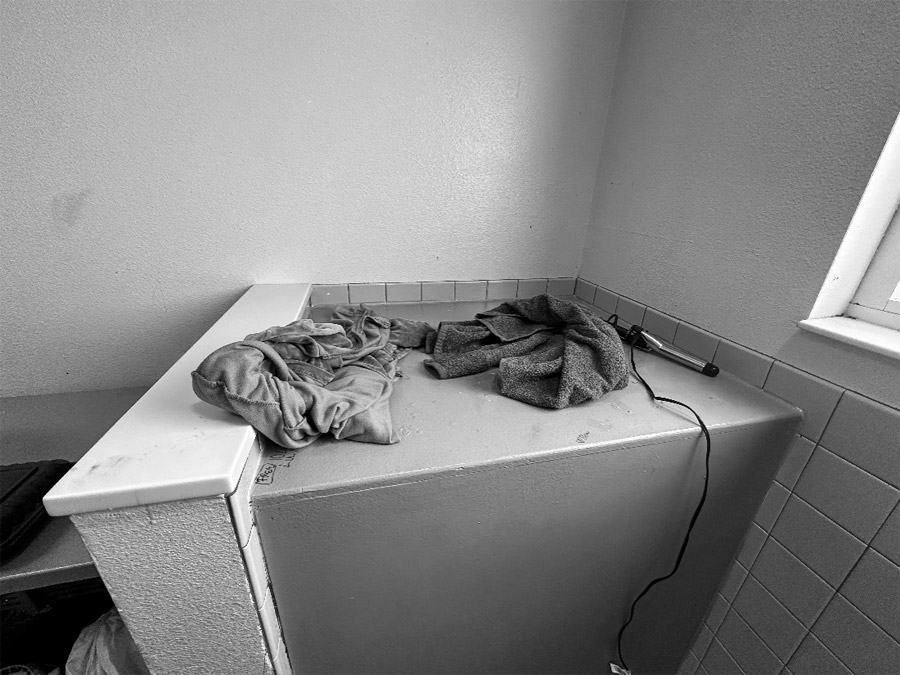
The WET Center’s cells each have a metal toilet and a sink. The County has covered some of the toilets with gray wooden boxes to make the cells feel more “homelike.” This photo was taken inside the back corner of the same occupied double occupancy cell. It depicts articles of clothing and a hair curler sitting on top of the gray wooden box.
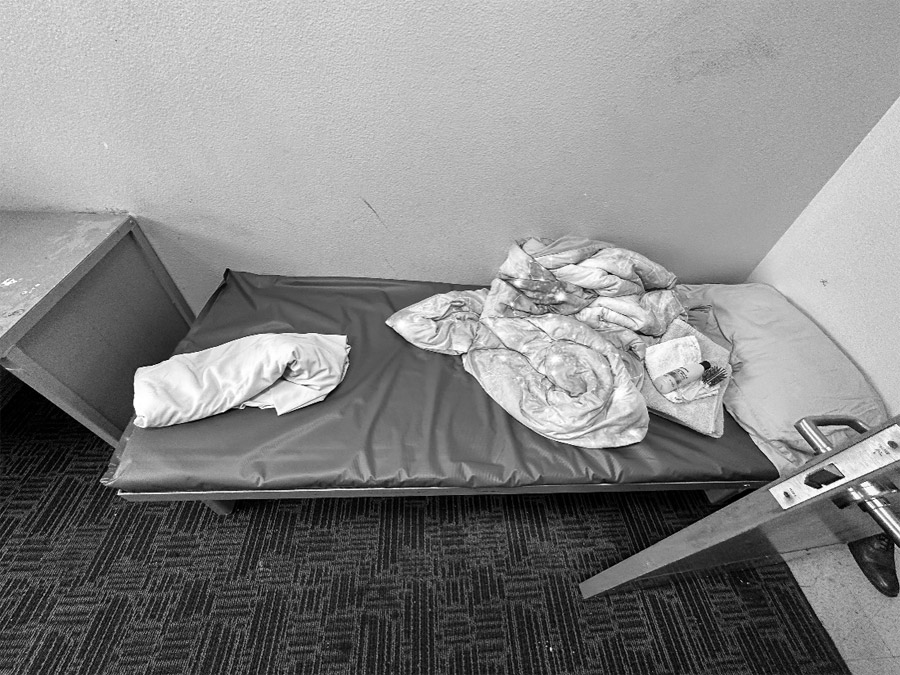
This photo depicts the bed on the right side in the same occupied cell. The cell door hits the metal bed frame and cannot completely open.
The cells in the WET Center had functioning electrical outlets, which is rare for this type of facility. DRC inquired and learned that the County installed the electrical outlets during the week prior to our inspection. The County ran extension cords to the cells prior to installing the outlets but stopped this practice after the Fire Department deemed it a hazard.
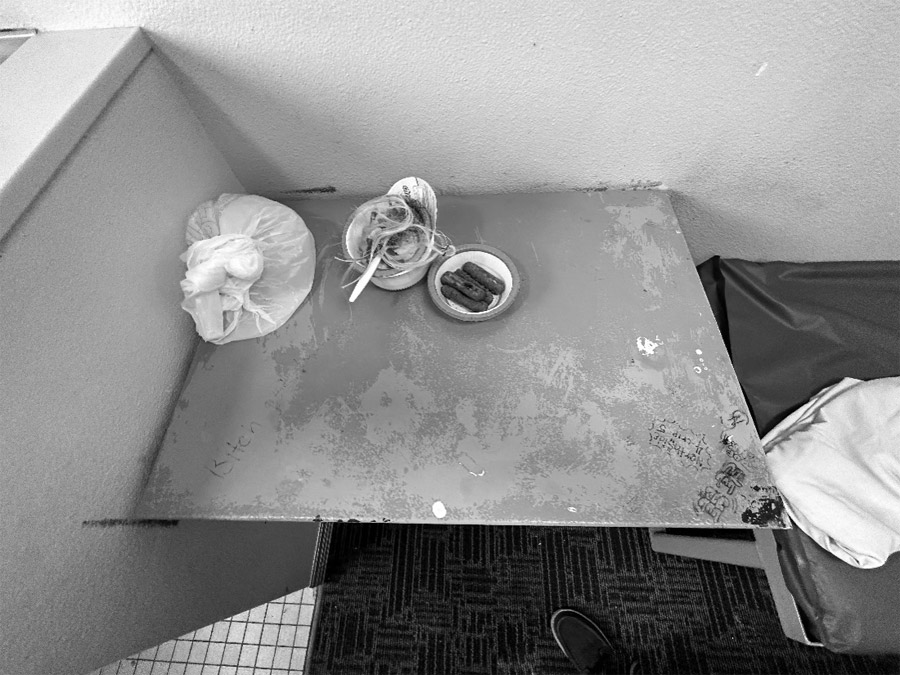
County staff prepare meals for the youth in the staff breakroom. The breakroom has multiple refrigerators, microwaves, and air fryers, but no oven. The breakroom also houses staff cubicles, printers, and office supplies, and is not dedicated to hygienically preparing meals. DRC inspectors observed a staff person returning from a grocery run and preparing the meal calendar.
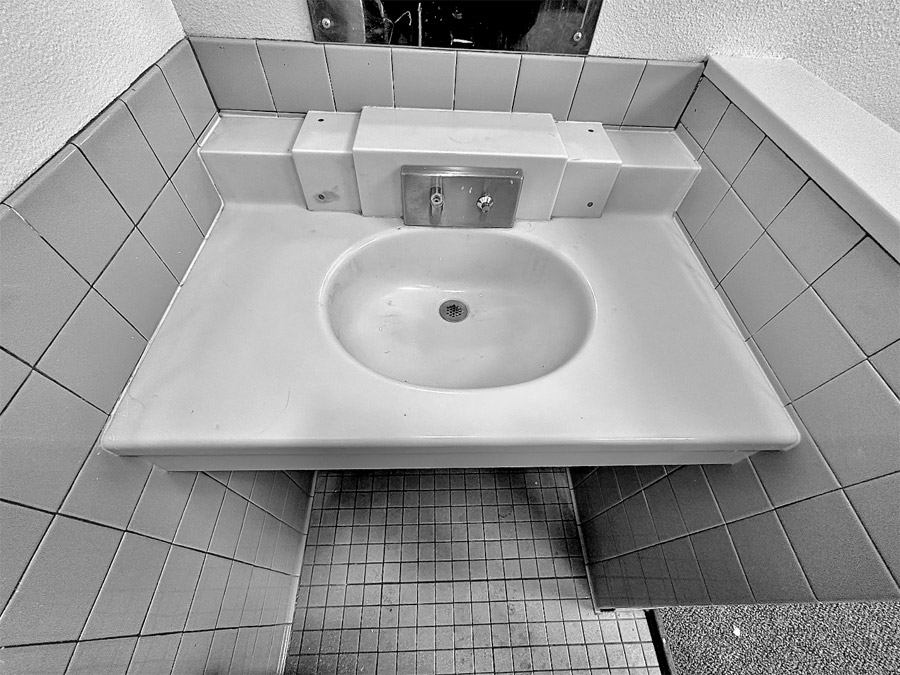
The sink in an unoccupied double occupancy cell. Youth press a button to dispense water.
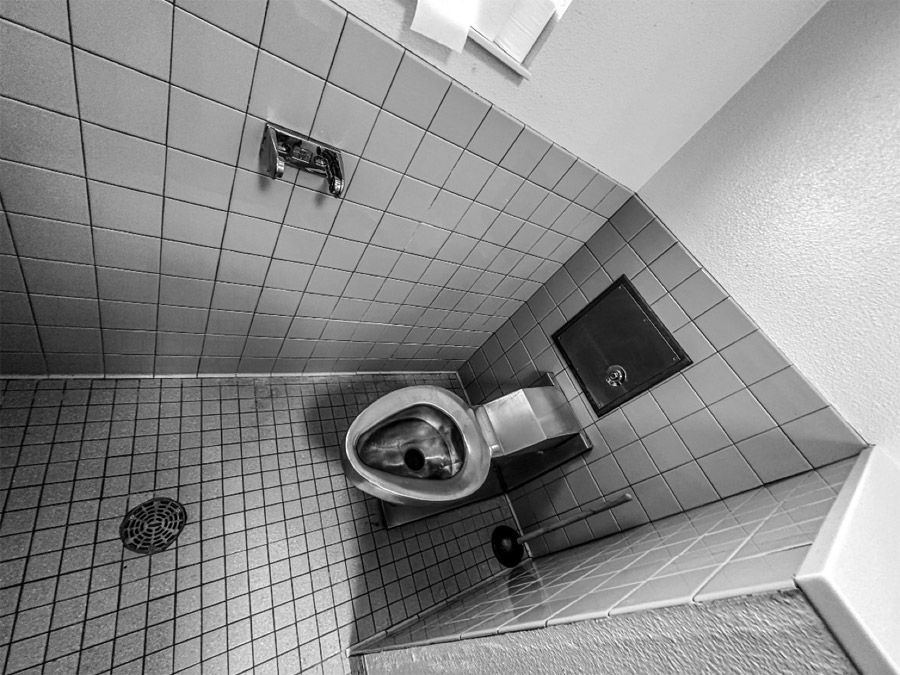
This photograph shows a metal toilet that the County has not covered with a wooden box. The County has designated five of the cells as restrooms. The restrooms are locked from the outside. Adult staff must unlock the doors for youth prior to use. Four of the five restrooms were inoperable on the day of DRC’s inspection.

This photograph depicts an unoccupied, double occupancy cell taken from the back of the room. These are the same metal bed frames as shown above but without the plastic bedding pads.
Shower Facilities
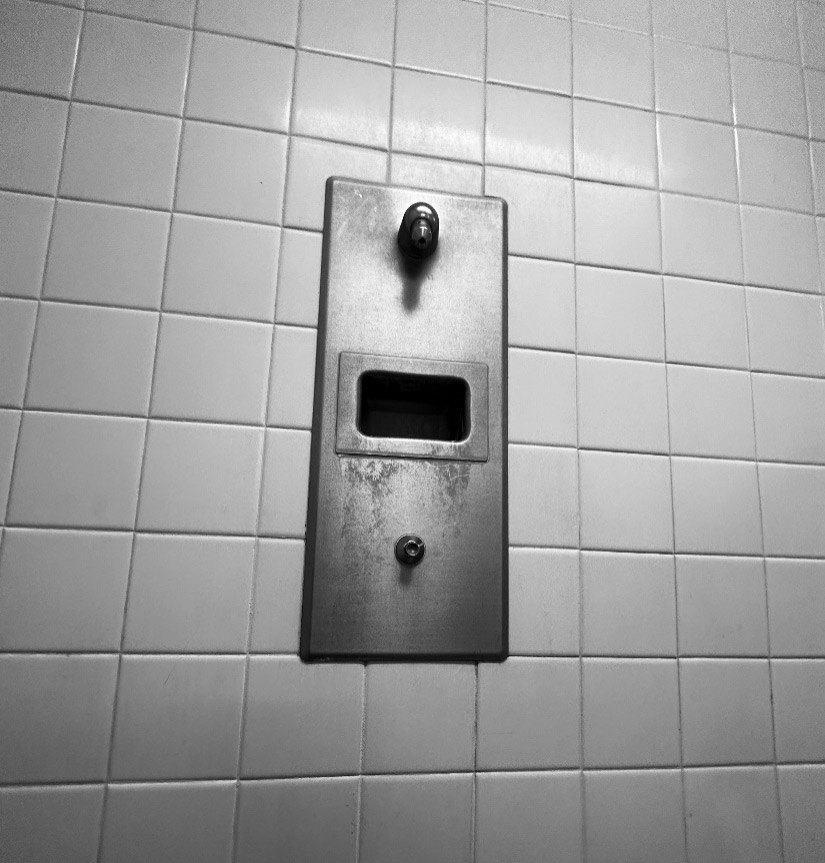
This photograph shows the inside of a shower stall. Water dispenses from the small, ball-like spigot at the top. To have continuous flow for showering, youth must repeatedly press the button located below. Youth complained to drc inspectors about inconsistent shower temperatures and the lack of culturally appropriate personal hygiene items.
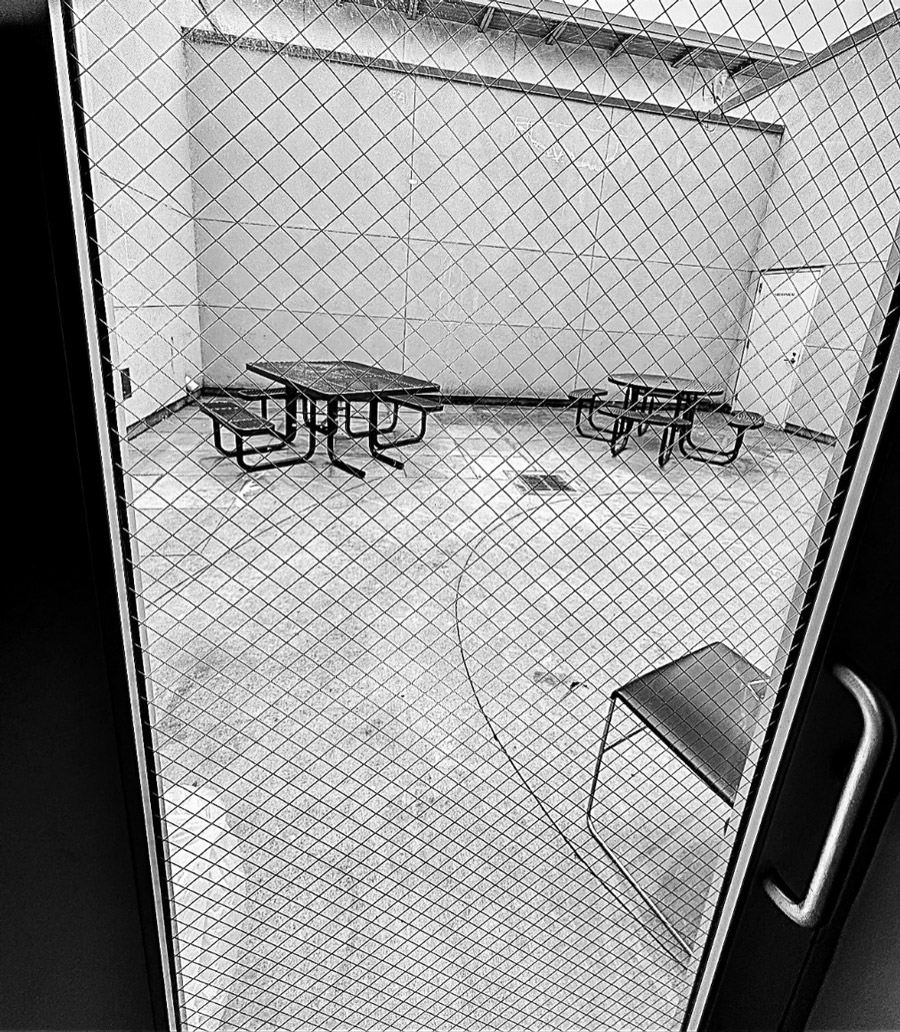
This image shows the facility’s outdoor recreational area. It is an enclosed concrete space with benches bolted to the ground and no shade. Besides the cells, DRC inspectors observed few appropriate areas in the facility for youth to do their homework or to meet confidentiality with their families and treatment teams.
Conclusion
DRC’s Investigations Unit will continue to investigate the WET Center consistent with our state and federal mandates to protect and advocate for the rights of Californians with disabilities. We will update this report as the situation develops.
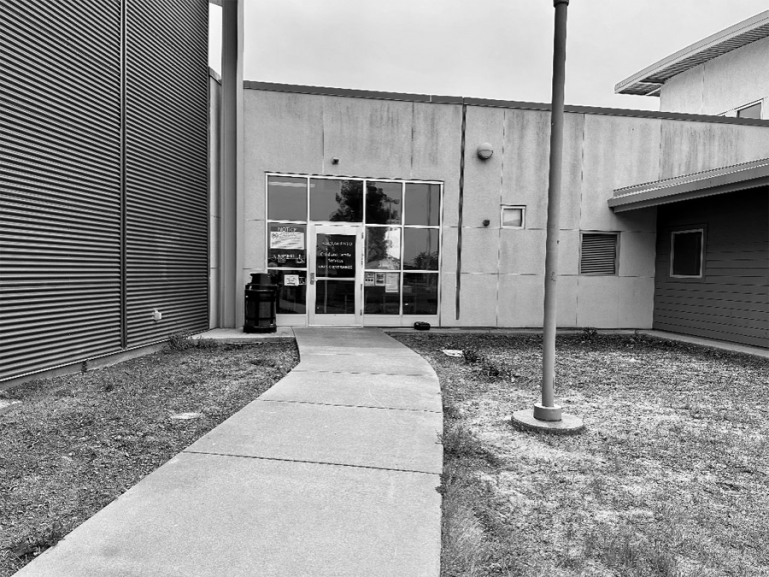
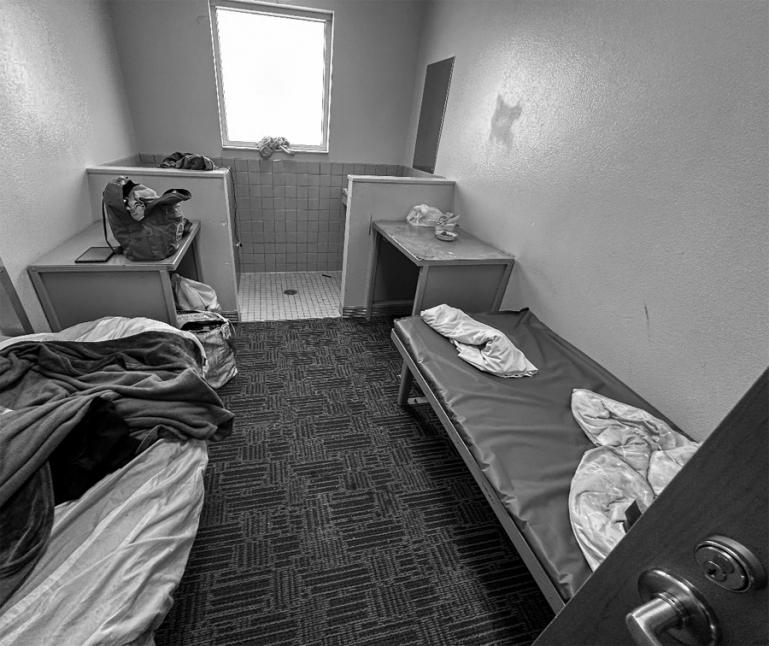
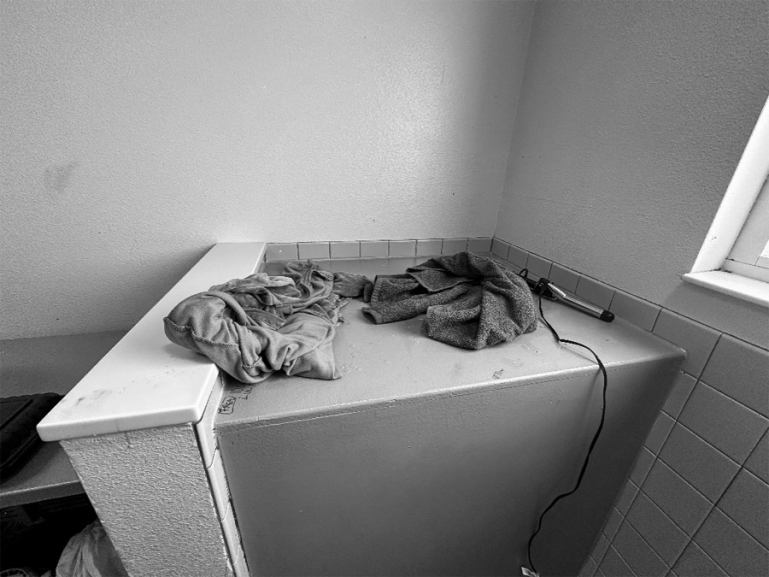
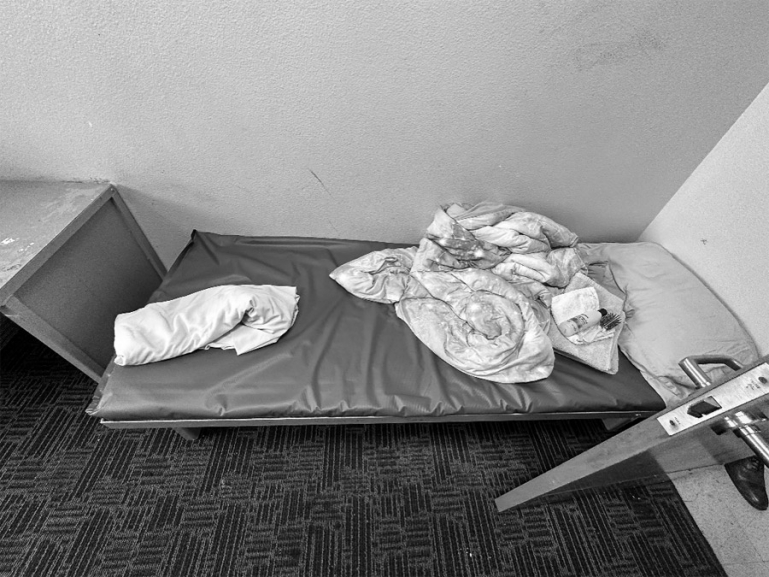
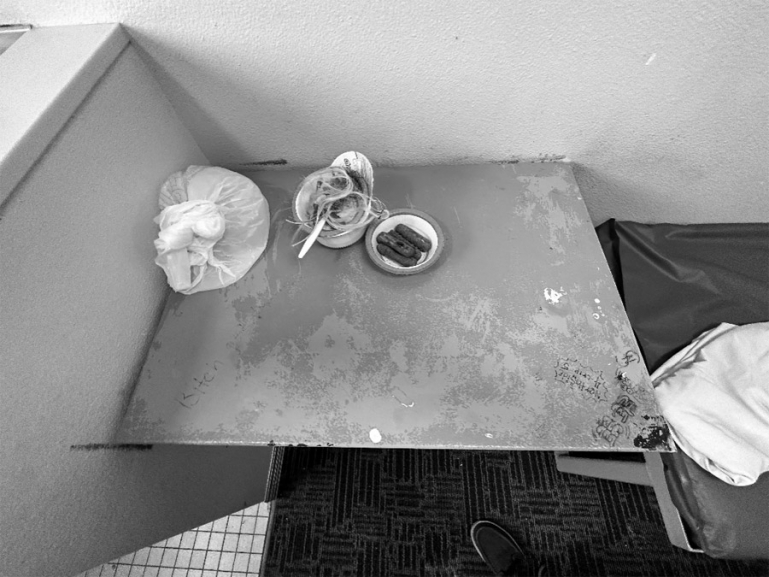
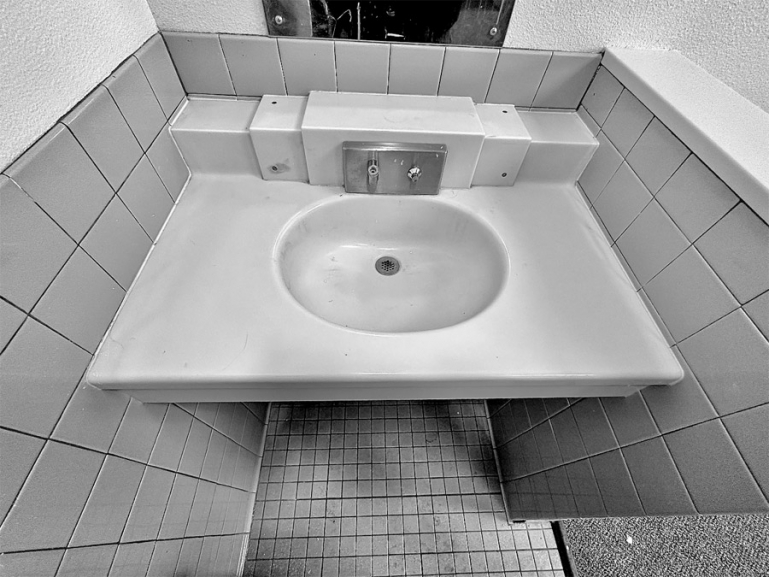
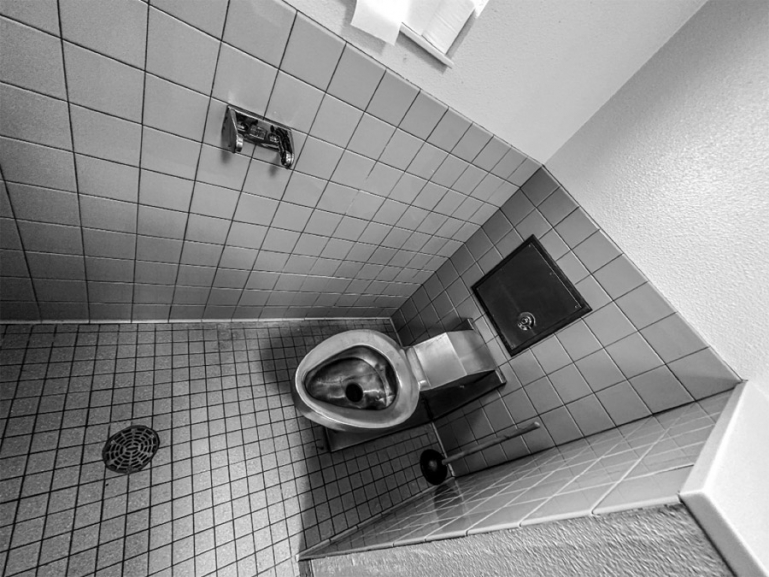

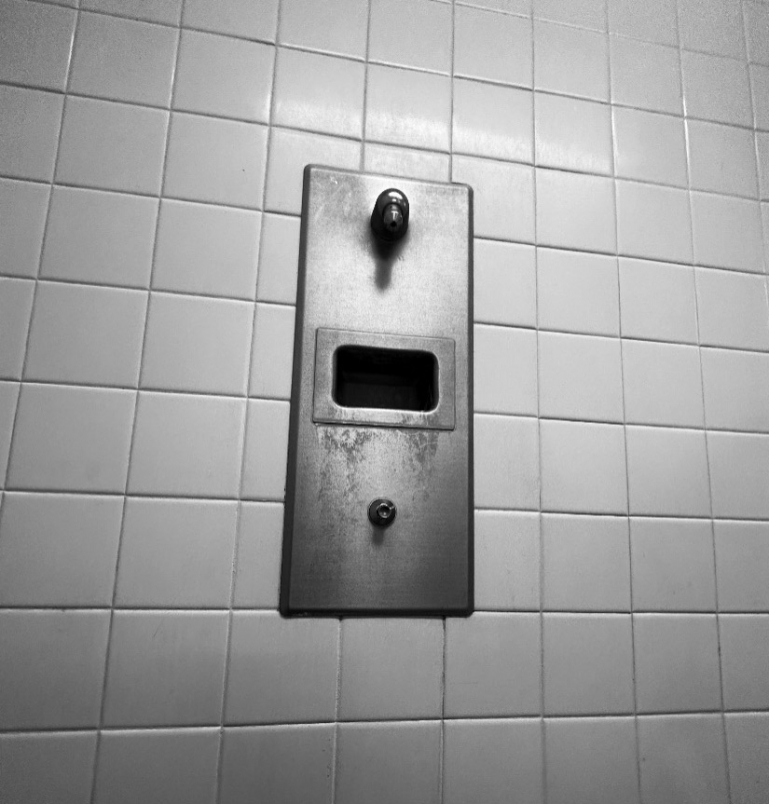
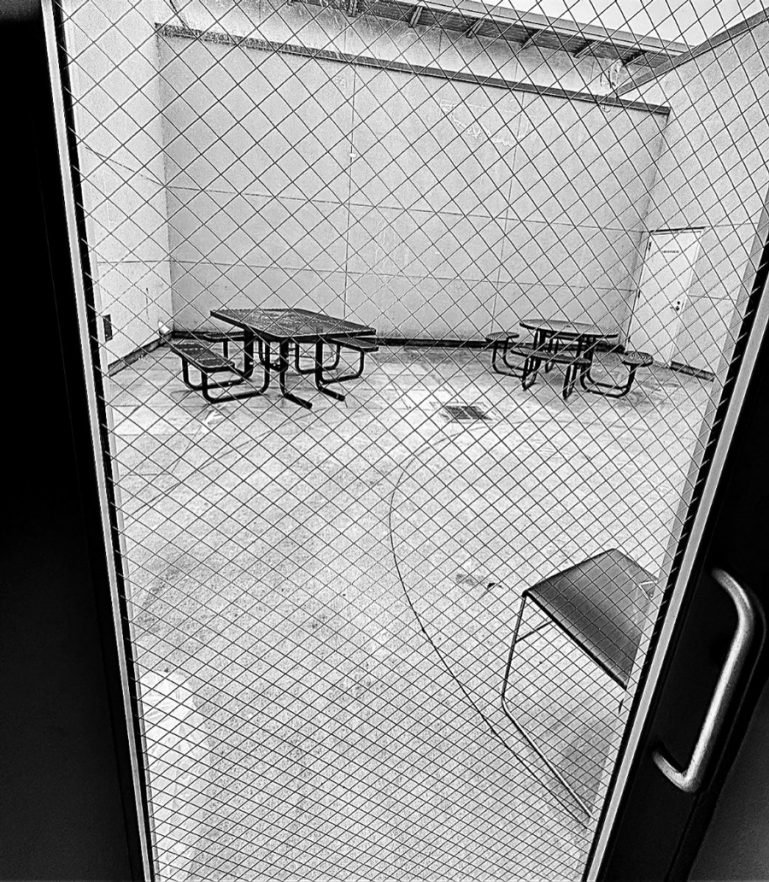
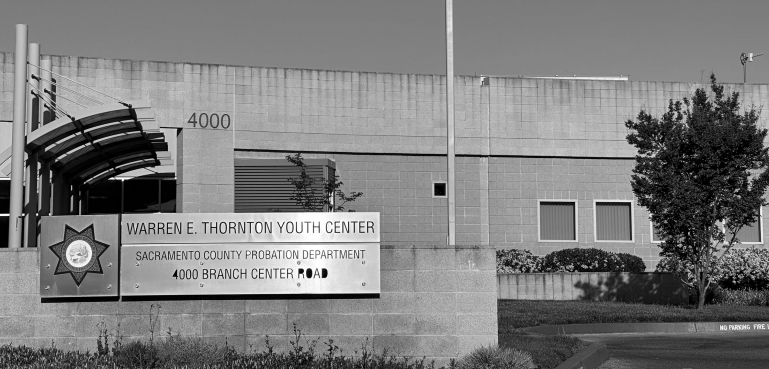
- 1. Theresa Clift, “Exclusive: Sacramento County foster kids have been living in cells for 6 months,” Sacramento Bee (Apr. 10, 2023), https://www.sacbee.com/news/local/article273785975.html.
- 2. 42 U.S.C. §§ 10805(a)(4)(B)(iii),15043(a)(2)(I)(ii)(III); Welf. & Inst. § 4903(a)(2)(C).
- 3. Welf. & Inst. § 4903(h)(3)(B); 42 C.F.R. § 51.45(b)(1); 45 C.F.R. § 1326.28(c).
- 4. Dion Burns et al., California’s Students in Foster Care: Challenges and Promising Practices, Learning Policy Institute (Jul. 2022), https://learningpolicyinstitute.org/product/california-students-foster-care-report.
- 5. Christine Platt & Sheila M. Gephart. “Placement disruption of children with disabilities in foster care.” Journal of Pediatric Nursing 66 (2022): 30-35.
- 6. Matt Kramer, “Unlicensed sleepovers: Sacramento County’s foster care unit faces imminent closure for stranding kids in office,” Sacramento News & Review (Aug. 24, 2017), https://www.newsreview.com/sacramento/content/unlicensed-sleepovers-sacramento-countys-foster-care-unit-faces-imminent-closure-for-stranding-kids-in-office/24895422/; Karen de Sá, “State orders troubled foster care office to close,” San Francisco Chronicle (Aug. 13, 2017), https://www.sfchronicle.com/news/article/State-orders-troubled-Sacramento-foster-care-11813539.php.
- 7. Michelle Bandur, “‘I am devastated’: Sacramento County sued for housing foster youth in former jail facility,” KCRA (Apr. 26, 2023), https://www.kcra.com/article/sacramento-county-lawsuit-housing-foster-youth-former-jail-betty-williams/43700272.
- 8. Letter from Kevin Gaines, Deputy Director, Community Care Licensing Division, to Melissa Lloyd, Sacramento Child Protective Services (Feb. 13, 2023)
- 9. Sacramento County Probation, History: Origins of Probation (2023), https://saccoprobation.saccounty.gov/Admin-DepartmentInfo/Pages/History.aspx.




